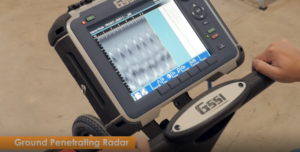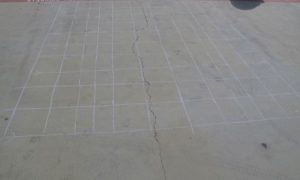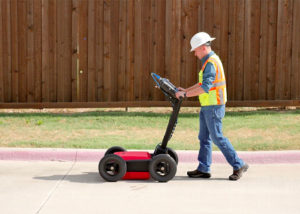Because concrete is stronger in compression than in tension, most concrete used for construction is reinforced with steel bars to resist internal tensile stresses. Commonly referred to as reinforced concrete, this heterogenous composite construction material is coveted worldwide for its availability, durability, cost efficiency, and versatility. Because reinforced concrete construction is so common, these type structures are often the subjects of forensic evaluations; and, with ongoing advancements in technology, non-destructive test methods such as ground penetrating radar (GPR) have become a key component of these evaluations.

A GPR functions by transmitting and receiving high frequency radio waves. When a GPR-transmitted radio wave is reflected by an object and received by the GPR antenna, the properly-calibrated GPR unit records the strength of the reflected wave as well as the elapsed time, then produces a graphic representation of this information. In general, more reflective materials, such as steel reinforcing bars, contrast greatly compared to the surrounding concrete material. For example, reinforcing steel bars appear as bright parabolic elements on the GPR’s output, allowing the user to ascertain the quantity, spacing, and depth of the reinforcement.


Utilizing GPR for the evaluation of reinforced concrete structures can provide an accurate representation of as-built conditions for comparison against the original design, or for identifying areas that may require specific repair or strengthening without the need for costly destructive testing. Nelson utilizes ground penetrating radar (GPR) for non-destructive testing of concrete building components such as slabs, walls, columns, and beams. GPR is also used to locate the extent of potential voids below slabs-on-grade or behind basement/retaining walls.


